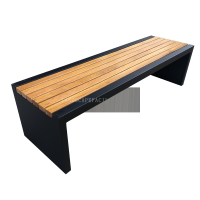Welcome to the website for landscape facilities products and knowledge.
How does concrete resist thermal expansion?
Concrete is a widely used construction material known for its durability and strength. One of its key properties is its ability to resist thermal expansion, which is crucial for maintaining structural integrity under varying temperatures.
Thermal expansion occurs when materials expand or contract due to temperature changes. Concrete, however, has a relatively low coefficient of thermal expansion compared to metals, meaning it expands and contracts less under temperature fluctuations. This is due to its composite nature, combining aggregates (like sand and gravel) with cement paste. The aggregates, which make up a significant portion of concrete, have a lower thermal expansion coefficient, helping to stabilize the material.
Additionally, concrete's internal structure includes tiny pores and microcracks that can absorb minor expansions without causing significant stress. Reinforced concrete, which includes steel bars, further enhances this resistance. The steel and concrete work together, with the steel handling tensile stresses while the concrete handles compressive forces, reducing the risk of thermal cracking.
Proper mix design and curing also play a role. Using additives like fly ash or slag can reduce thermal expansion, while controlled curing ensures gradual hardening, minimizing internal stresses. By understanding these mechanisms, engineers can design concrete structures that withstand temperature variations effectively.
Related search:

Recommendation
Modern Stainless Steel Begonia Wood Park Chair Outdoor Courtyard Leisure Sun Protection Bench Long Seat